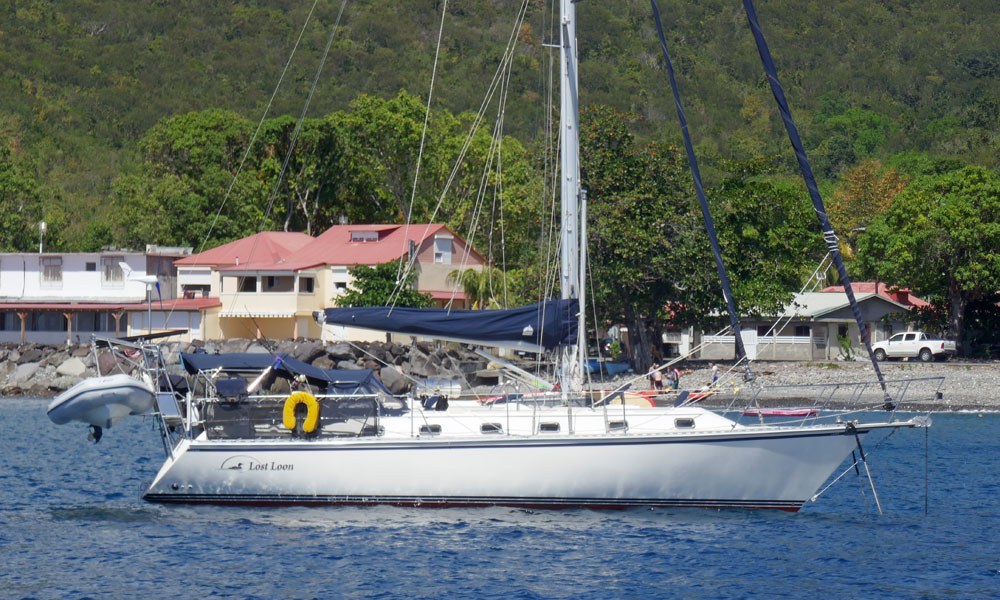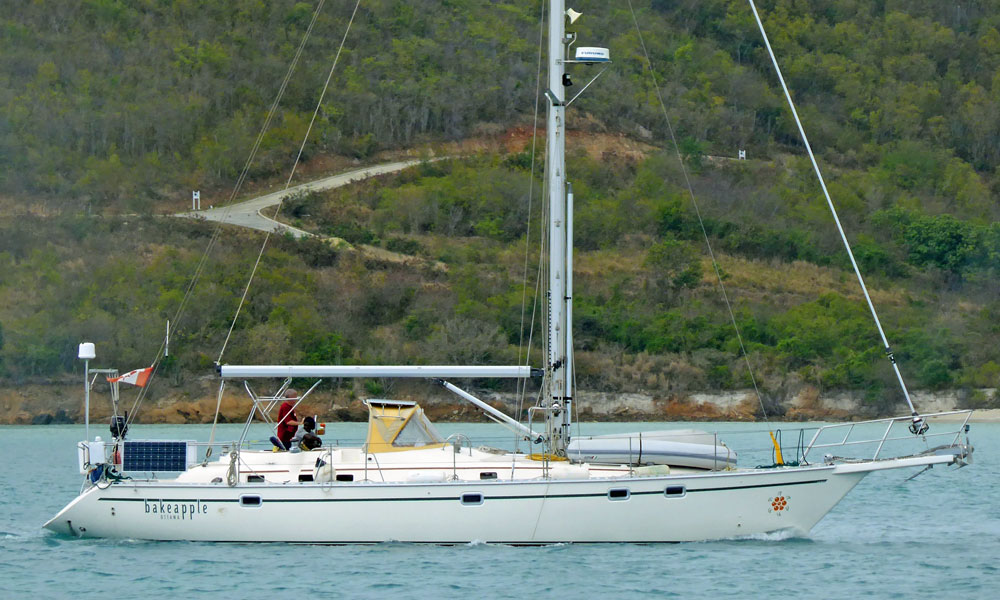- Home
- Cruising Yachts 45' to 50'
- Caliber 40 LRC
The Caliber 40 LRC Sailboat
Specs & Key Performance Indicators
The Caliber 40 LRC, a robust long-range cruiser sailboat, is a creation from the drawing board of Michael McCreary, an American designer. This sailboat exemplifies a blend of endurance and comfort for long-distance sailing.
It is built by Caliber Yachts, a company established and located in Clearwater, Florida. Caliber Yachts is renowned for its commitment to quality and durability, focusing on crafting vessels that cater to serious cruisers.
Brothers George and Michael McCreary, together with Marshall Jones, formed Caliber Yachts Inc. as a backyard boatbuilding company in 1979. Without bank financing, Caliber Yachts began building boats one at a time, producing its first, a 28-footer, in 1981. By 1985 the company was sufficiently solvent to build a factory, and introduce a 33-footer. A 30, 35, 40, and 47 followed. The Long Range Cruising (LRC) line began in 1994. The Caliber 40 LRC has a projected cruising range of 1,484 miles when motoring at 7 knots with a Yanmar 50 diesel running at 2,500 rpm.
Published Specification for the Caliber 40 LRC
Underwater Profile: Fin keel with skeg-hung rudder
Hull Material: GRP
Length Overall: 40'11" (12.5m)
Waterline Length: 32'6" (9.9m)
Beam: 12'8" (3.9m)
Draft: 5'0" (1.5m)
Rig Type: Cutter
Displacement: 21,600lb (9,798kg)
Designer: Michael McCreary
Builder: Caliber Yachts (USA)
Year First Built: 1995
Published Design Ratios for the Caliber 40 LRC
The Caliber 40 LRC sailboat, with its design ratios, offers a unique set of sailing characteristics ideal for long-term cruising.
- The Sail Area/Displacement Ratio of 15.3 suggests that while it might not be the fastest vessel, its performance is balanced, tailored more towards steady and reliable cruising rather than speed. This is slightly underpowered compared to high-performance boats but is typical for sturdy cruising designs prioritizing safety and comfort over racing capabilities.
- The Ballast/Displacement Ratio of 44 indicates a strong ability to resist capsizing and maintain stability in heavy winds. This high ratio points to a stiffer, more powerful vessel. However, it's crucial to remember that this metric doesn't account for the exact placement of ballast, which can significantly affect stability.
- With a Displacement/Length Ratio of 281, the Caliber 40 LRC falls into the 'Heavy Displacement' category, which means it's designed to handle more adverse sea conditions robustly, albeit at the expense of requiring more sail area to reach its designed hull speed.
- A Comfort Ratio of 32.4 places this boat squarely within the range typical for moderate bluewater cruising boats. This indicates a vessel that should provide a relatively comfortable ride in various conditions, mitigating the excessive motion that can fatigue crew members during extended passages.
Moreover, the Capsize Screening Formula at 1.8 strongly underscores the boat's suitability for ocean passages, suggesting it has a lower propensity for capsizing compared to many other vessels, a critical factor for serious bluewater cruisers.
It's important to note the theoretical nature of these design ratios. While they provide valuable insights, they are general indicators and can't entirely capture all nuances of a boat's performance and comfort. Specifically, the Ballast/Displacement Ratio does not consider the vertical center of gravity, which is crucial for actual stability, and Ted Brewer's Comfort Ratio may not favor modern vessel designs that are beamy and light but still capable in heavy seas. Thus, while these ratios provide a useful framework for evaluating vessel traits, they should be considered in conjunction with real-world performance and sea trials.
This article was written with the assistance of Gemini, a large language model developed by Google. Gemini was used to gather information, summarize research findings, and provide suggestions for the content and structure of the article.
Press Reviews for the Caliber 40 LRC
Practical Sailor tells us "The design and construction of the Caliber 40 LRC make it suitable for offshore use. In decent winds it should give 150-180-mile days. Upwind performance is typical of moderately heavy cruising boats; odds are she’ll be motor-sailed on long coastal trips to weather. On balance, she’ll cover fewer miles than lighter-weight competitors, but will provide a more comfortable ride in heavy seas. Read more...
Other sailboats in the Caliber range include:
Recent Articles
-
Is Marine SSB Still Used?
Apr 15, 25 02:05 PM
You'll find the answer to this and other marine SSB-related questions right here... -
Is An SSB Marine Radio Installation Worth Having on Your Sailboat?
Apr 14, 25 02:31 PM
SSB marine radio is expensive to buy and install, but remains the bluewater sailors' favourite means of long-range communication, and here's why -
Correct VHF Radio Procedure: Your Questions Answered
Apr 14, 25 08:37 AM
Got a question about correct VHF radio procedure? Odds are you'll find your answer here...














